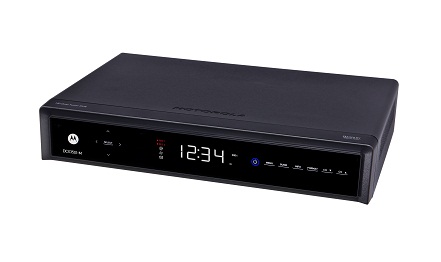Could Cable Come Back With a ‘TV-Lite’ Future Of Re-aggregation And Upselling? (Bloom)
Mix a skinny version of the traditional bundle with a few choice streaming services, add some cloud-based video gaming, deliver it all through a super-fast broadband connection and voila, you have a possible revival of what was the most lucrative entertainment sector of the past few decades

Amid the sea of numbers about and sectors carved from entertainment that are detailed in the latest annual PwC U.S. Entertainment and Media Outlook is this tangy prospect: Cable TV, or an evolved version of it, might make a comeback over the next few years.

Mix a “TV lite” version of the traditional cable bundle, a few choice streaming services, add in newer entertainment experiences like cloud-based video gaming, delivered through a broadband connection and voila, you have a possible revival/reformation of what was the most lucrative entertainment sector of the past few decades.
“Our insights and forecasts suggest evolved packages that center around a broader definition of entertainment are in the future,” PwC’s C.J. Bangah, who is a consulting principal on TMT Customer Transformation, wrote me in an email interview from the Cannes Lions conference. “How we get from where we are today to that future is still being written. The pace at which new pricing models and packages are delivered are likely going to correlate to a few factors, including the broader economic environment.”
It’s hard to imagine the bad ol’ cable tyrants seizing back the monopolistic power they exercised 20 years ago. But what might result over the next few years could settle into a sustainable long-term business, instead of one in seemingly inexorable decline, PwC’s report suggests.
Consumers will likely have choices even for broadband connectivity, especially if 5G fixed wireless or ATSC 3.0 deliver on their promises over the next few years. That means, the first job of the cable providers is keeping as many of the customers they already have engaged at some minimum level.
For all their eroding consumer base, cable providers are still in 63% of American homes, the report says, and can use their broadband beach heads to amortize delivery costs for everything else they may sell. The key is maintaining the broadband/lite TV relationship.
“This is important because it allows cable to weather the storm of cable-cutting and cord-trimming as users move to using more stand-alone TV providers,” the PwC report says. “Retaining these now lower-paying subs means that as the re-bundling of third-party services occurs, cable TV will be able to recoup these losses. Additionally, this strategy preserves the ability for cable to cater to premium subscribers who are using more expensive services like access to sports content.”
NEXT TV NEWSLETTER
The smarter way to stay on top of the streaming and OTT industry. Sign up below.
With that ongoing customer relationship, the cable companies have a chance to actually solve problems for increasingly vexed consumers overwhelmed by the tyranny of too much choice.
The re-bundling, or re-aggregation, of TV programming is “increasingly likely,” because navigating between so many major streaming services “takes its toll on the performance of all of them. In order to grow revenue across all of these competing companies, it is necessary for a neutral aggregator to play the role of the consumer gatekeeper.”
Yeah, that sounds a lot like traditional cable television, except it won’t be. PwC’s outlook for “traditional TV and home entertainment” is expected to continue declining in the United States, both in terms of customers and revenue, and across the rest of the continent.
Over the next five years, the North American market is expected to drop from 44% of global share to 33%, as cable continues to grow in some overseas territories. Cable in the U.S. is expected to lose another 4.5 million subscribers over the next five years, though at a decreasing rate, but also to evolve into a different kind of platform.
“By 2026, cable distribution is expected to be nearly synonymous with broadband double-play, meaning that for many of these households there will be little difference between a cable and an effective IPTV home,” the report says.
The real advantage with selling consumers a minimal “TV lite” or “pay lite” array of cable networks is the ability to upsell, and not just, say, a three-month trial of HBO.
Among the new services that can be differentiators is cloud-based gaming. Amazon announced its Luna service a few months ago, running on its Fire TV platform. Apple already had Arcade, with about 200 titles that, like the Fire platform, can be played with an external Bluetooth controller or mobile phone. Netflix launched its own game service last year.
But unlike delivering video, which requires a consistent, relatively high-bandwidth signal, games need a near-instantaneous response to the player’s actions. The future delivery systems will need to ensure they’re able to keep up with all the demands on their capabilities.
Making this transition won’t be easy even with the home-field advantages that cable providers can still claim with millions of customers, Bangah acknowledges.
Expensive battles over which platforms or services secure rights to premium live sports and other events are already playing out, with Amazon’s Thursday Night Football deal starting this season, Apple and Peacock new carveouts for MLB rights, and Apple’s 10-year deal for a standalone app with Major League Soccer.
“There is no clear market-dominant winner for the future of entertainment and media,” Bangah writes. “We see fault lines and innovation opportunities across most segments, and while for traditional TV players there are strengths they can use to help protect and drive market share – there are also very strong headwinds they must compete against.”
The distribution platforms (Roku, Apple TV, Amazon Fire TV, Smart TV OEMs) may become more powerful than they already have, but Bangah cautioned, “There are few clear likely durable winners in the next five years.”
So can cable TV come back? Maybe so.
The industry has to provide inexpensive options to keep its remaining customers around, simplify their headaches with subscribing to, paying for and navigating a broad range of services, and make it easier to actually find the shows they want. Piece of cake, right?
David Bloom of Words & Deeds Media is a Santa Monica, Calif.-based writer, podcaster, and consultant focused on the transformative collision of technology, media and entertainment. Bloom is a senior contributor to numerous publications, and producer/host of the Bloom in Tech podcast. He has taught digital media at USC School of Cinematic Arts, and guest lectures regularly at numerous other universities. Bloom formerly worked for Variety, Deadline, Red Herring, and the Los Angeles Daily News, among other publications; was VP of corporate communications at MGM; and was associate dean and chief communications officer at the USC Marshall School of Business. Bloom graduated with honors from the University of Missouri School of Journalism.

